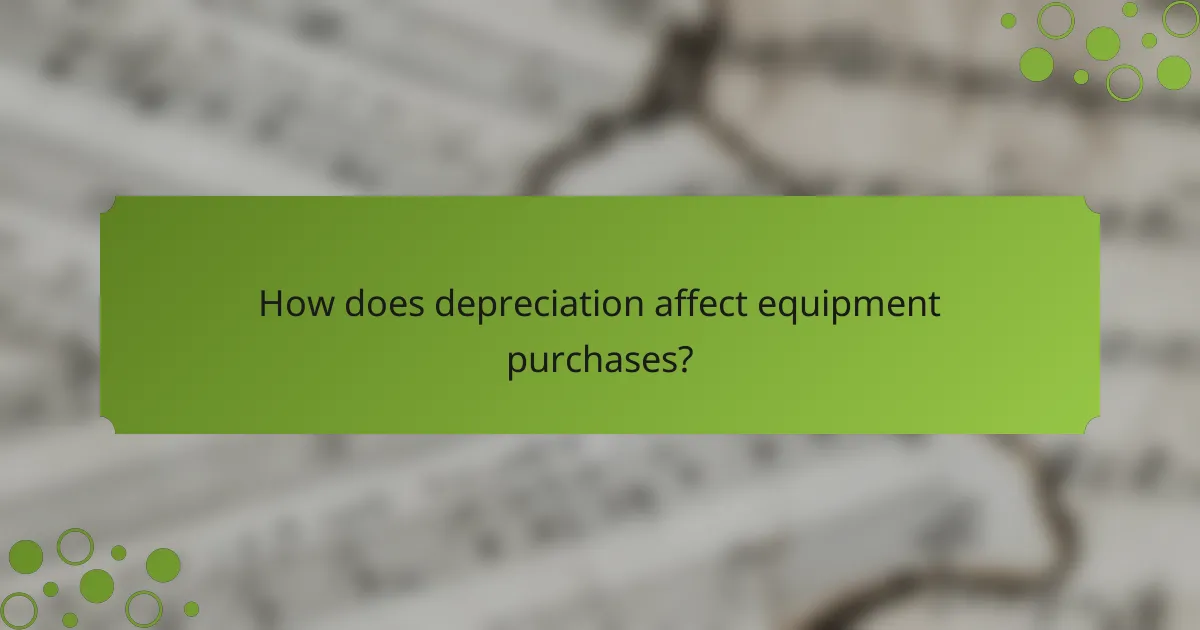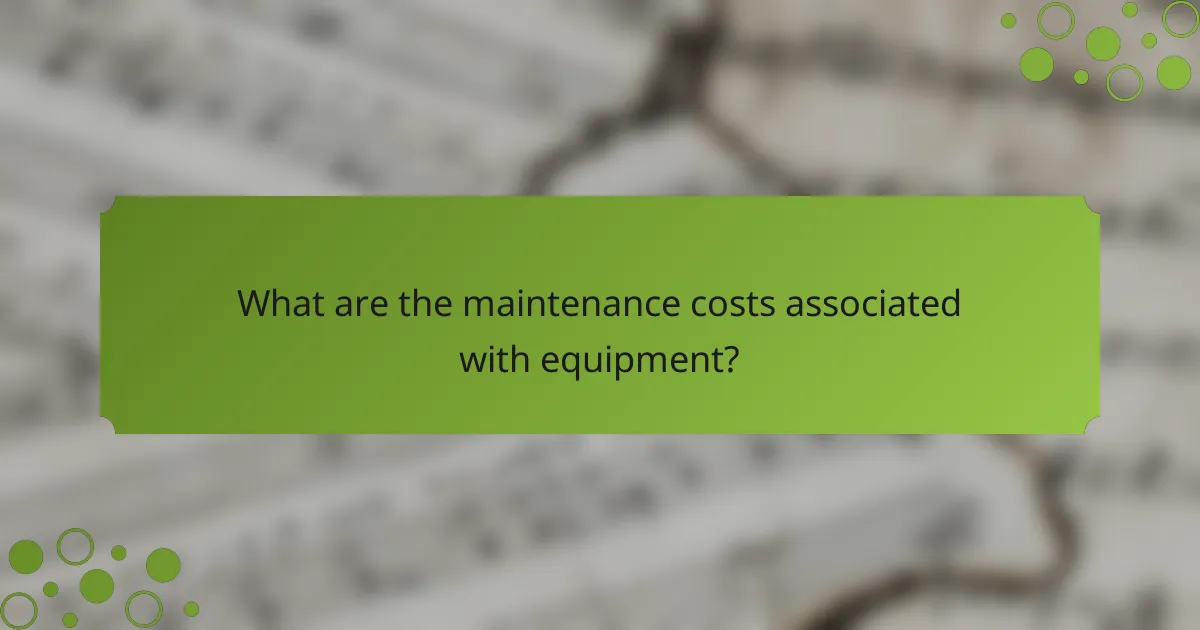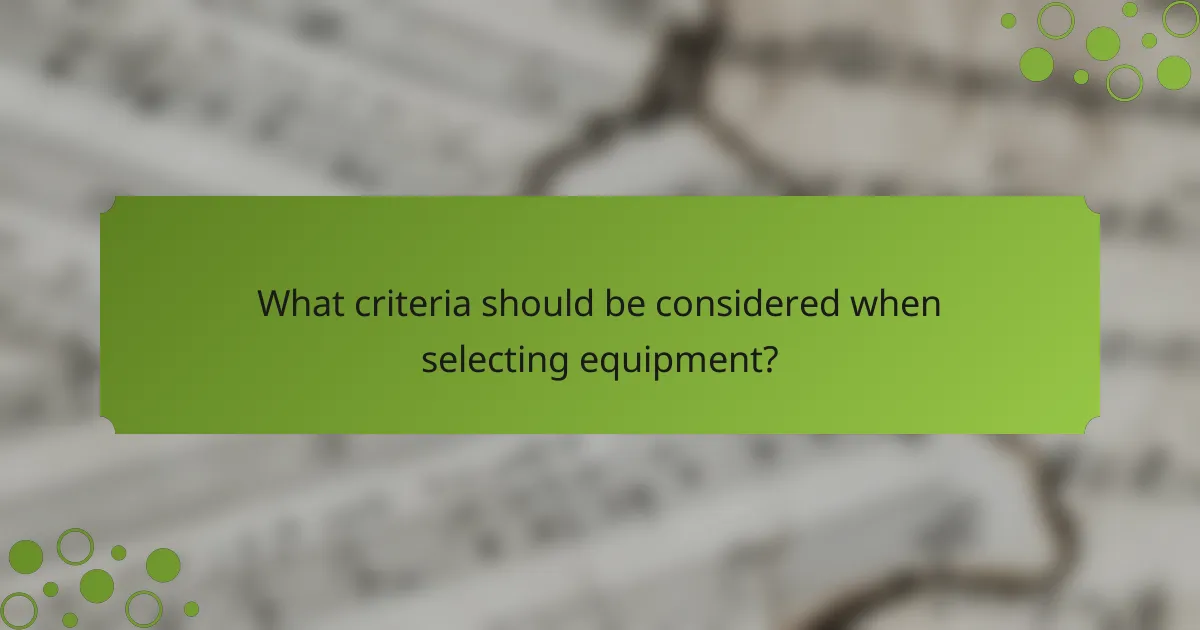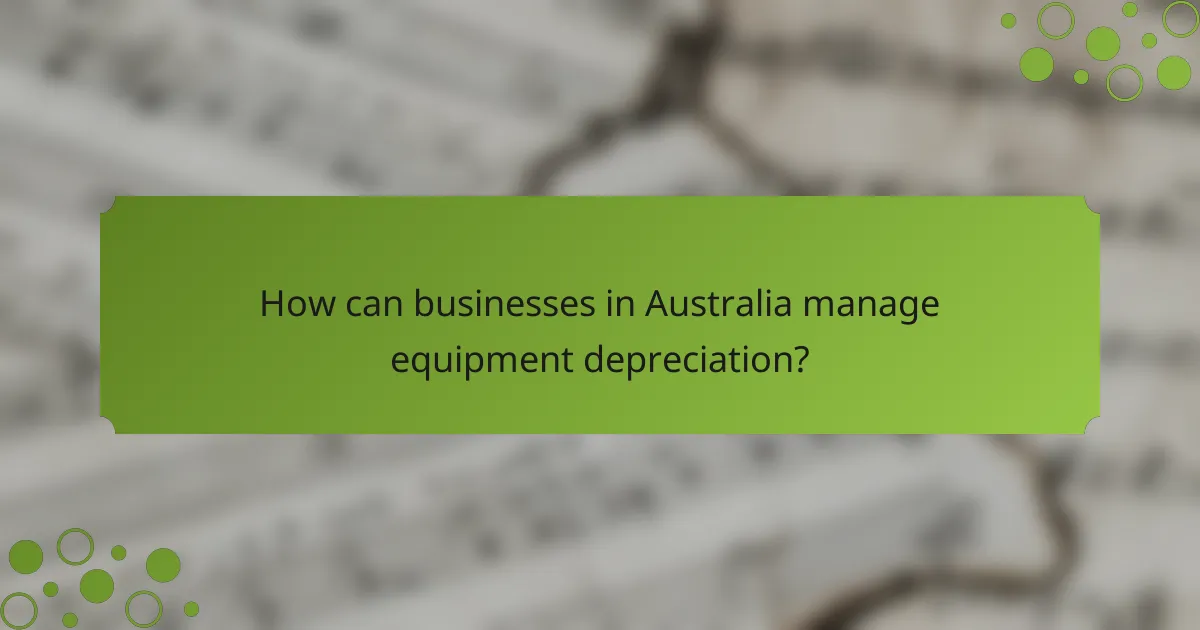When considering equipment purchases, businesses must focus on long-term investment strategies that encompass depreciation and maintenance costs. By evaluating these factors, companies can enhance their return on investment and mitigate financial risks. Understanding how depreciation affects asset value and planning for maintenance expenses are essential for effective budgeting and ensuring equipment longevity.

What are the best equipment purchase strategies in Australia?
The best equipment purchase strategies in Australia involve evaluating long-term investments, understanding depreciation, and managing maintenance costs effectively. These strategies help businesses maximize their return on investment while minimizing financial risks.
Long-term investment benefits
Investing in equipment for the long term can lead to significant benefits, including improved productivity and reduced operational costs. By choosing durable and reliable machinery, businesses can avoid frequent replacements and repairs, which can be costly over time.
Additionally, long-term investments often come with tax advantages, as businesses can claim depreciation on their equipment. This can lead to substantial savings, especially for high-value assets.
Cost-saving techniques
To save costs when purchasing equipment, consider buying used or refurbished items, which can be significantly cheaper than new ones. Ensure that these items are certified and come with warranties to mitigate risks associated with their condition.
Another technique is to negotiate bulk purchase discounts or explore leasing options, which can reduce upfront costs while still providing access to necessary equipment. Regular maintenance can also prevent costly repairs and extend the lifespan of the equipment.
Financing options
Various financing options are available for equipment purchases in Australia, including loans, leasing, and hire purchase agreements. Each option has its advantages, such as lower initial payments with leasing or ownership benefits with hire purchase.
Businesses should assess their cash flow and financial situation to determine the most suitable financing method. Consulting with a financial advisor can provide insights into the best options tailored to specific business needs and goals.

How does depreciation affect equipment purchases?
Depreciation significantly impacts equipment purchases by reducing the asset’s book value over time, which affects financial planning and tax obligations. Understanding how depreciation works can help businesses make informed decisions about their investments and manage their cash flow effectively.
Understanding depreciation methods
There are several methods to calculate depreciation, with the most common being straight-line and declining balance. The straight-line method spreads the cost evenly over the asset’s useful life, while the declining balance method accelerates depreciation in the early years. Choosing the right method depends on the equipment type and the financial strategy of the business.
For instance, if a company purchases machinery for $10,000 with a useful life of 10 years, using the straight-line method would result in an annual depreciation expense of $1,000. In contrast, the declining balance method might allow for higher deductions in the initial years, which can be beneficial for tax purposes.
Impact on financial statements
Depreciation affects both the income statement and the balance sheet. On the income statement, depreciation is recorded as an expense, reducing taxable income and impacting profitability. On the balance sheet, it reduces the asset’s book value, reflecting the wear and tear or obsolescence of the equipment.
For example, if a company reports $2,000 in depreciation for the year, this amount will lower its net income, which can influence investor perceptions and financial ratios. It’s crucial for businesses to accurately track depreciation to ensure compliance with accounting standards and provide a true picture of their financial health.

What are the maintenance costs associated with equipment?
Maintenance costs for equipment include regular upkeep expenses and unexpected repair costs. Understanding these costs is crucial for budgeting and ensuring the longevity of your equipment.
Regular maintenance expenses
Regular maintenance expenses are predictable costs incurred to keep equipment in good working condition. These can include routine inspections, lubrication, cleaning, and parts replacement, which typically occur at set intervals.
For many types of equipment, regular maintenance can range from a few hundred to several thousand dollars annually, depending on the complexity and usage. It’s advisable to budget around 5-10% of the equipment’s purchase price for these ongoing expenses.
Unexpected repair costs
Unexpected repair costs arise from equipment failures that occur outside of scheduled maintenance. These costs can significantly impact your budget, as they are often unplanned and can vary widely based on the nature of the failure.
To mitigate these costs, consider setting aside a contingency fund, typically around 10-15% of the equipment’s value. This fund can help cover repairs that may arise due to wear and tear or unforeseen issues, ensuring that your operations remain uninterrupted.

What criteria should be considered when selecting equipment?
When selecting equipment, it’s essential to evaluate operational needs and budget constraints. These criteria ensure that the equipment meets the specific requirements of your operations while remaining financially viable.
Operational needs
Identifying operational needs involves assessing the tasks the equipment must perform and the environment in which it will operate. Consider factors such as capacity, efficiency, and compatibility with existing systems. For example, if your business requires high-volume production, investing in equipment with greater output capabilities is crucial.
Additionally, think about the longevity and reliability of the equipment. Choosing machinery with a proven track record can minimize downtime and maintenance costs. Always align the equipment features with your specific operational goals to maximize productivity.
Budget constraints
Budget constraints play a significant role in equipment selection. It’s important to establish a clear budget that includes not only the purchase price but also ongoing costs such as maintenance, repairs, and potential upgrades. For instance, a lower initial cost might lead to higher long-term expenses if the equipment is less durable or efficient.
Consider financing options and potential return on investment (ROI) when evaluating your budget. A well-planned budget can help you avoid overspending while ensuring that you acquire equipment that meets your operational needs effectively. Always weigh the total cost of ownership against the benefits the equipment will provide.

How can businesses in Australia manage equipment depreciation?
Businesses in Australia can effectively manage equipment depreciation by understanding its impact on financial statements and cash flow. This involves utilizing appropriate accounting methods, monitoring asset performance, and planning for future replacements.
Tax implications
In Australia, equipment depreciation can significantly affect taxable income. Businesses can claim depreciation as a tax deduction, which reduces their taxable profit and, consequently, their tax liability. The Australian Taxation Office (ATO) allows various methods for calculating depreciation, including the diminishing value method and the prime cost method.
It’s essential to keep accurate records of asset purchases and their depreciation schedules. This ensures compliance with ATO regulations and maximizes tax benefits. Businesses should also be aware of the instant asset write-off provisions, which allow eligible businesses to deduct the full cost of qualifying assets immediately, up to a certain threshold.
Asset management strategies
Effective asset management strategies are crucial for optimizing equipment depreciation. Regular maintenance and timely upgrades can extend the useful life of assets, reducing overall depreciation costs. Businesses should implement a maintenance schedule to ensure equipment remains in good working condition.
Additionally, conducting periodic asset evaluations can help businesses determine when to replace or upgrade equipment. This proactive approach can prevent unexpected downtime and costly repairs, ultimately leading to better financial management. Consider using asset management software to track performance, maintenance, and depreciation schedules efficiently.

What are the emerging trends in equipment investment?
Emerging trends in equipment investment focus on integrating advanced technology and adopting sustainable practices. These trends are reshaping how businesses approach long-term investments, emphasizing efficiency and environmental responsibility.
Technological advancements
Technological advancements are revolutionizing equipment investment by enhancing productivity and reducing operational costs. Innovations such as automation, artificial intelligence, and IoT (Internet of Things) enable businesses to optimize equipment usage and maintenance schedules.
For instance, predictive maintenance tools can analyze equipment performance data to forecast failures, potentially saving companies significant repair costs. Investing in smart equipment may require a higher upfront cost, but the long-term savings can be substantial.
Sustainable purchasing practices
Sustainable purchasing practices are increasingly influencing equipment investment decisions, as businesses aim to minimize their environmental impact. This includes selecting energy-efficient machinery and considering the lifecycle of equipment, from production to disposal.
Companies are encouraged to evaluate equipment based on sustainability criteria, such as energy consumption and recyclability. For example, investing in energy-efficient models may lead to lower utility bills and compliance with environmental regulations, ultimately benefiting both the company and the planet.
